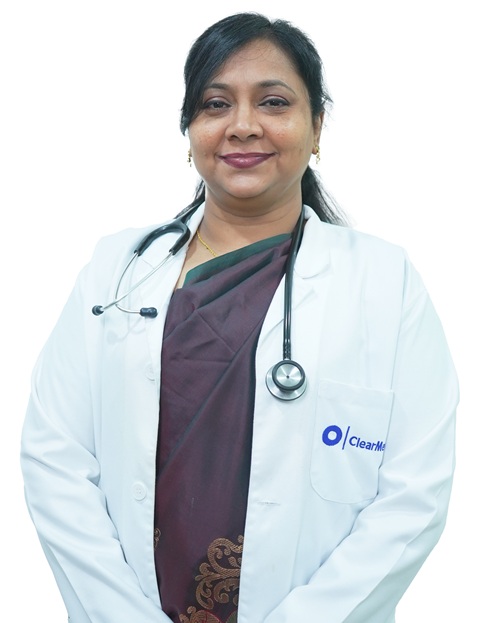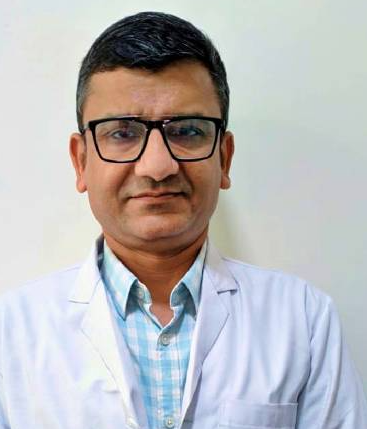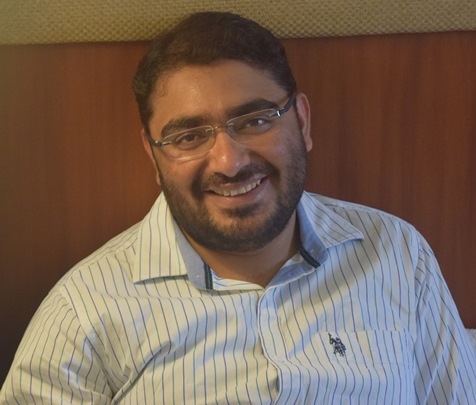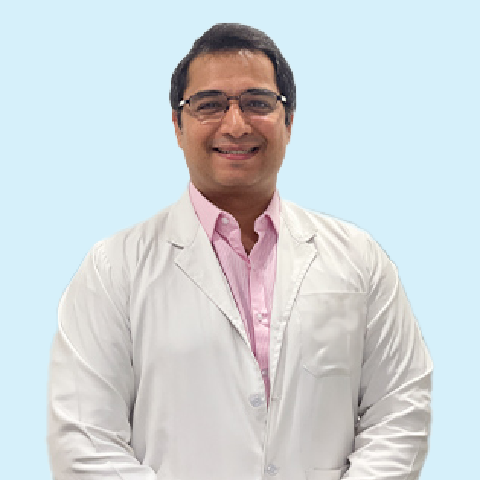How to Remove Warts (Massa) on Skin Naturally?

Quick Summary
- Warts are rough, bumpy growths on the skin that can be removed by a doctor or at home with home remedies.
- There are many different types of warts, each with its own unique appearance.
- Warts are contagious and can be spread through contact with an infected person or object.
If you ever happen to notice rough, bumpy growths on the skin, then it's advised to show it to a doctor, as these new growths on the skin may be warts. They may spread and cause pain and can also look bad, making the person uncomfortable. Hence, in most instances, wart removal is a good option.
In most instances, warts go away as people develop immunity to it. However, it may take six months to 2 years to go away. Many people get it treated to facilitate its quick removal, as warts are contagious. Wart removal can be done at home and at a doctor's clinic, depending upon its spread and type.
This article provides information about warts and everything you need to know about how to remove warts and wart removal home remedies.What are Skin Warts?
Skin warts are small rough bumps or growths that can appear anywhere on the skin. Warts are often seen on the hands, around the fingernails, face, feet, and knees, which are generally small, rough, flat or dome-shaped and have fleshy growths that appear brown, black, or grey in colour.
Warts are generally caused due to human papillomavirus (HPV). HPV can enter the body through cuts on the skin, causing an infection that forms warts. Since a virus causes them, warts are contagious.
There are several modes through which warts can be transmitted. These modes include the following:
- Coming in direct contact with a wart
- Touching contaminated things like towels, tables, doorknobs, washcloths, clothing, etc
- Sexual transmission in the form of genital warts
- Biting nails or picking on the cuticles
- Shaving the face or legs
- Scratching a wart
A doctor can diagnose warts just by simply examining the growths and bumps. To further confirm it, the doctor may perform a biopsy to diagnose HPV.


Who is at the Risk of Developing Skin Warts?
Children are at the most risk of contracting HPV and getting warts. This is because their immune systems are not developed enough. Additionally, they are also prone to injuries making it easier for the virus to spread.
People with a weak immune system, such as those battling HIV or AIDS or those who have undergone organ transplantation, are also at a high risk of getting warts.
What is Wart Removal?
Wart removal is a treatment approach for treating skin warts. The goal of wart removal focuses on removing warts by destroying them, stimulating the immune system to act against the virus, or both.
The best approach for wart removal is at a doctor's clinic, as they use treatment methods that provide quick results while ensuring minimum pain. Usually, a dermatologist performs wart removal.
Several treatment options are available for wart removal. However, your doctor will recommend the right treatment after thoroughly examining you.
Wart Removal without Surgery
There are several methods of removing warts without surgery, including:
Wart Removal Home Remedies
Various wart removal home remedies can be tried for wart removal. Although there is little or no reliable research evidence of whether or not wart removal home remedies work effectively. However, several people have found them to be helpful. The various wart removal home remedies are listed below:
- Apple cider vinegar: Apple cider vinegar (ACV) is acidic and can be used for wart removal. To use this remedy, two parts of ACV and one part of water must be mixed and applied onto the wart with a cotton ball. The wart is then covered with a bandage and left for a few hours. Diluting Apple Cider Vinegar with water is vital to prevent skin irritation and burns. It is not to be used on open wounds.
- Duct tape: Using duct tape for wart removal is a common home remedy. In this remedy, duct tape is to be applied to the wart and left there for 3 to 7 days. After this, the tape is removed, and the dead skin is to be gently exfoliated. A new tape is to be reapplied after 12 hours. This is to be done for 4 to 6 weeks to see effective results.
- Aspirin: Since aspirin contains salicylic acid, it can be used as an effective treatment for warts at home. To do this, crush and mix aspirin with water. Apply the mixture over the wart and cover it up with a bandage.
Chemical Peels
Wart removal can be done at home easily using salicylic acid, glycolic acid, or tretinoin. Over-the-counter or prescription formulations containing salicylic acids, like gels, creams, paints, or patches, can be used to treat warts.
Chemical Peel works by peeling the layers of the skin away, eventually removing the wart over time. This acid also irritates the wart to trigger an immune system response against the virus. To use salicylic acid at home:
- Bath or soak the area infected with skin warts in warm water for about 10 to 12 minutes.
- Once the skin is soft, scrub it using a pumice stone and generously apply the salicylic acid formulation over the wart.
- This process is to be repeated twice a day for a few weeks or months for wart removal.
The patient may experience the following side effects while undergoing this treatment option:
- Skin discolouration into red or dark colour
- Irritation on the skin
- Blister formation
- Bleeding
- Occurrence of pain
It is advised to seek medical attention immediately if you are experiencing any of the above side effects.
Important note:
- The pumice stone used for filing or scrubbing the patient's skin must not be used by anyone else, as it may also infect them.
- Also, people with diabetes and immune conditions are advised not to use salicylic acid for wart removal.
- This treatment method may or may not work for every patient. This is because several factors like patient resistance, the thickness of the wart, allergic reaction to the acid in the patient, and the place where the wart is situated on the body may influence the effect of salicylic acid.
Cryotherapy
Cryotherapy is an effective wart removal treatment that can be given to adults and older children. Cryotherapy involves freezing the wart to facilitate its removal.
In this wart removal technique,
- A doctor scrapes off some of the dead skin from the wart.
- Liquid nitrogen is then applied to the exposed skin onto the wart with the help of a probe, dipstick, cotton ball, or by a cryostat gun.
- The liquid nitrogen freezes the wart and eventually leads to the forming of a blister around and under the wart.
- After about seven days, the blister breaks, dries up and crusts, and eventually falls off. The patient might need the treatment a few more times (around 2-3 weeks apart).
Important note: Cryotherapy may cause some pain, and hence, it is not advised to be used in children. The following side effects may occur with cryotherapy for wart removal:
- Mild headache in case of cryotherapy on the forehead or temple for wart removal.
- Fever
- Red and swollen blister formation
- Blister opening up post-treatment
- Pus oozing from the blister
- Pain
- Faint marks which fade over time
- Hair loss on the site of cryotherapy can be permanent.
- Although the risk of infection with cryotherapy is rare, inform your doctor immediately if you notice the above mentioned side effects of cryotherapy.
Immunotherapy
For warts that fail to respond to traditional methods, immunotherapy may be used. Immunotherapy medications work by making the patient’s immune system fight off the virus. Immunotherapy for wart removal can be used in the following manner.
- Topical Immunotherapy: This treatment involves applying a substance, such as diphencyprone (DPCP) or squaric acid dibutyl ester (SADBE), to the wart. These substances are thought to stimulate an immune response in the body, which can help to destroy the wart. Topical immunotherapy can be effective in wart removal, but it can also cause side effects, such as redness, itching, and inflammation.
- Intralesional Immunotherapy: This involves injecting a substance, such as interferon or Candida antigens, directly into the wart. This treatment can be effective for treating warts, but it can also be painful and may cause side effects such as redness, itching, and inflammation.
Important note:
- Immunotherapy is not recommended for everyone and should be used under the guidance and supervision of a medical professional.
- It may be used for people with warts that have not responded to other treatment options.
- It's also important to keep in mind that, immunotherapy can take several weeks or months to be effective and may not work for everyone.
Cantharidin
- Cantharidin is a chemical compound derived from the blister beetle used as a topical treatment for warts. Cantharidin produces its action on the epidermis of the skin.
- Cantharidin is usually applied to the wart by a healthcare provider in a medical office setting; it is not available for OTC use. It's usually applied to the wart in a very small amount with a wooden applicator stick. It can cause a blister to form within 24-48 hours after application, the blister will dry, and the wart will peel off within a week.
- Since cantharidin does not affect the basal layer, there is no scarring. The patient can then return to the doctor's clinic after a week to get the dead wart removed.
Important note:
- Cantharidin should be used under the guidance and supervision of a medical professional, as it is a potent irritant and can cause serious skin reactions if not used properly.
- It should not be used on mucous membranes, such as the genitals, or on areas of the skin that are sensitive or thin, such as the face.
- It's also important to remember that, like with other wart removal treatments, Cantharidin may not work for everyone, and there is a risk of recurrence.
Anticancer drugs
- Anticancer drugs, also known as chemotherapy drugs, are primarily used to treat cancer by killing rapidly growing cells. These drugs can be administered orally, intravenously or topically. They are not generally used as a primary treatment for warts, as these drugs target cancer cells, whereas a virus causes warts.
- These drugs are sometimes used to treat warts, but it is an off-label use and only used in specific cases. These drugs work by stimulating an immune response to the wart and causing the cells in the wart to die.
Important note:
- Anticancer drugs for wart removal are not a common treatment option, and it's only considered as a last resort, under the guidance and supervision of a medical professional, as these drugs have potential side effects and may not be effective for everyone.
- Also, these drugs are typically more expensive than other wart removal options.
Wart Removal with Surgery
Surgery is typically performed if the warts are not removed through other treatments.
Electrosurgery/Curettage
- Electrosurgery and curettage are two similar surgical procedures used to remove warts. Electrosurgery is a procedure that uses an electrical current to burn and destroy the wart tissue, while curettage is a procedure that uses a sharp instrument (such as a curette) to scrape away the wart tissue.
- Both procedures are typically performed under local anaesthesia and are considered effective for removing warts, particularly those that are large or recurrent or in a location that makes them difficult to treat with other methods.
- These procedures can remove warts on any body part, but they are most commonly used on the feet and hands.
- The procedure is generally considered safe, but as with any surgical procedure, there is a risk of complications such as bleeding, infection, and scarring.
- Recovery time after electrosurgery or curettage can vary, depending on the size and location of the wart and the individual's healing process.
Important note:
- These procedures should be performed by a trained and qualified healthcare professional, as they require skill and precision to ensure that all of the warts is removed while minimising damage to surrounding healthy tissue.
- Also, there is a risk of recurrence with any wart removal treatment, and it's important to keep in mind that a virus causes warts, and there is a chance that the virus is still present, even after the wart has been removed.
Excision
- Excision is a surgical procedure that involves cutting off a wart with a scalpel or scissors. The procedure is performed under local anaesthesia, and the wart and a small margin of surrounding healthy skin are removed. The wound is then closed with sutures or adhesive strips.
- Excision is considered an effective treatment for warts, particularly for large, recurrent, or in a location that makes them difficult to treat with other methods.
- The procedure is generally considered safe, but as with any surgical procedure, there is a risk of complications such as bleeding, infection, and scarring.
- Recovery time after excision can vary, depending on the size and location of the wart and the individual's healing process. Generally, the person may return to their normal routine in 1 to 3 days.
Important note:
- Excision should be performed by a trained and qualified healthcare professional, as it requires skill and precision to ensure that all of the warts are removed while minimising damage to surrounding healthy tissue.
- Also, there is a risk of recurrence with any wart removal treatment, and it's important to keep in mind that a virus causes warts, and there is a chance that the virus is still present even after the wart has been removed
Laser Wart Removal
Laser wart removal is a treatment approach in which the warts are destroyed with the help of precise laser beams. A pulsed dye laser is the most commonly used type for laser wart removal. The doctor focuses precise laser beams on warts during the laser wart removal procedure. These laser beams destroy warts and work by cutting the supply of blood to warts. As a result of being deprived of blood supply, the wart-infected tissue falls off. It may take around 2 to 4 weeks to heal completely.
The following side effects may occur with laser therapy for wart removal:
- Scarring
- Mild pain
Tips to keep in mind for Wart Removal
The general tips that are to be kept in mind for wart removal include the following:
- Warts are highly contagious and can easily spread. Hence it is important to sanitize before and after wart removal.
- Any treatment for wart may take time to produce results, hence it is important to follow the treatment properly.
- Utmost hygiene is to be maintained before, during and after wart removal. All the items like cotton, duct tape or dressings used must be discarded properly to avoid infection to others.
- The medicines prescribed must be used as advised by the doctor.
- Touching, scraping or itching the warts is to be avoided. In case of any such activity, avoid touching any surfaces and wash hands with soap and water thoroughly.
- Although home remedies are useful, it is best to consult a doctor to get treatment for wart removal.
Lifestyle Changes
Lifestyle changes play a vital role in preventing warts. This is because warts are contagious and can easily spread to other body parts of an already infected person or to a healthy person by small common everyday mistakes. Some lifestyle changes that needs to be made for warts removal are:
- Avoid touching or skin-to-skin contact with a person infected with a wart
- Picking, scratching, and shaving the warts is to be avoided at all times
- Washing hands and maintaining hygiene
- Each person in the house must own individual personal care items like brushes, towels, razors, and brushes.
- Cleaning and covering the cuts and scratches properly
- Getting vaccinated for HPV
- Moisturising the skin to prevent dryness and cracks
- Using effective barrier birth control while having sex
- Not biting or nibbling on the nails
Takeaway
Warts are contagious skin growths that are rough and bumpy that develop due to human papillomavirus infection. Since they are contagious, warts removal is important.
Warts can be removed using various treatments like cryotherapy, laser therapy, chemical peels, surgery, etc. the best way to treat warts is by consulting a dermatologist. Following preventive measures for warts is essential to ensure that warts don't infect the other body parts of an already infected person as well as a healthy person.
At HexaHealth, our team of highly skilled doctors provides the best treatments for warts to ensure they are removed effectively, with minimum pain and discomfort to the patient. Our team always ensures to provide the right treatment at affordable prices. At HexaHealth, we provide not only great treatment but also amazing aftercare service, as our patient is our topmost priority.
Frequently Asked Questions
What are warts?
Warts are small rough bumps or growths that can appear anywhere on the skin. Warts are caused by the human papillomavirus (HPV). Warts are usually found growing on the epidermis of the skin. However, they can also grow on the mucosa.
Is wart removal painful?
Yes, wart removal can be painful depending upon the type of treatment used for its removal. For example, cryotherapy, surgery, excision, and laser therapy can cause mild pain.
What is the main cause of warts?
How to remove warts?
How do you get rid of warts naturally?
You can get rid of warts naturally by using home remedies like apple cider vinegar, aspirin mixture, or duct tape. Apart from that, you can also apply topical medications containing salicylic acid to get rid of warts.
Can I remove warts on my own?
Yes, you can remove warts on your own using home remedies. However, it is advised to get it treated by a dermatologist to prevent it from spreading to other body parts.
Do warts need to be surgically removed?
Yes, in certain cases where warts cause extreme pain and do not respond to other treatment methods need to be surgically removed. Additionally, surgery is immediately required in case of warts that may have become cancerous.
Do warts go away if left untreated?
Yes, warts may go away if left untreated. However, it may take a few years to clear up in adulthood. However, it is advised not to leave warts untreated as it may give rise to various complications, including cancer.
When is Laser wart removal recommended?
Laser wart removal is recommended for patients who fail to respond to other treatments and have warts that are large and have spread to many other body parts. Laser wart removal can also be done to treat warts in a pregnant woman.
What precautions are required before getting a wart removed?
The precautions that are required before getting a wart removed include,
- If going to a clinic to get a wart removed, ensure to wear comfortable clothes.
- Avoid scratching and scraping the wart before removing it.
- Inform the doctor about all the treatment approaches you used before.
- Avoid touching anything around the hospital to prevent contamination.
How long does wart removal surgery take?
A wart removal surgery may require about 30 minutes. Depending upon your overall health, your doctor will inform you about what to do post-surgery and the aftercare required. Additionally, the doctor will also inform you if you require another session or not.
How do I take care of after wart removal surgery?
To take care after wart removal surgery, follow all the instructions provided by the doctor. These aftercare tips may include
- Keeping the wound dry and not removing the bandage immediately after the surgery and until 48 hours to allow proper clotting
- Washing the operated area gently with water and soap
- Dressing and changing the bandage from time to time.
Last Updated on: 10 August 2024
Reviewer

Dr. Aman Priya Khanna
MBBS, DNB General Surgery, FMAS, FIAGES, FALS Bariatric, MNAMS General Surgery
13 Years Experience
Dr Aman Priya Khanna is a highly experienced and National Board–Certified Laparoscopic, GI, and Bariatric Surgeon with over 13 years of clinical expertise.
He is widely regarded as one of the best bariatric surgeons in Ahmedabad, ...View More
Author
HexaHealth Care Team
HexaHealth Care Team brings you medical content covering many important conditions, procedures falling under different medical specialities. The content published is thoroughly reviewed by our panel of qualified doctors for its accuracy and relevance.
Expert Doctors (10)
NABH Accredited Hospitals (5)
Latest Health Articles
Related Treatments




















 Open In App
Open In App